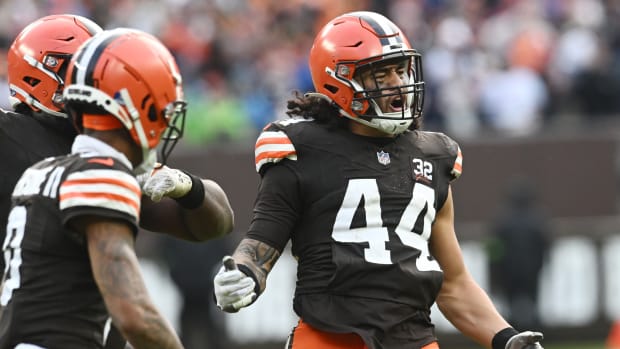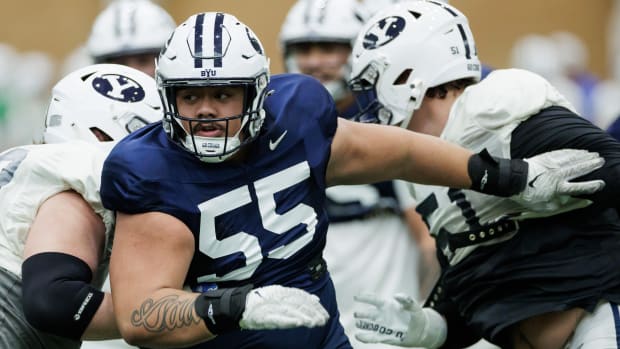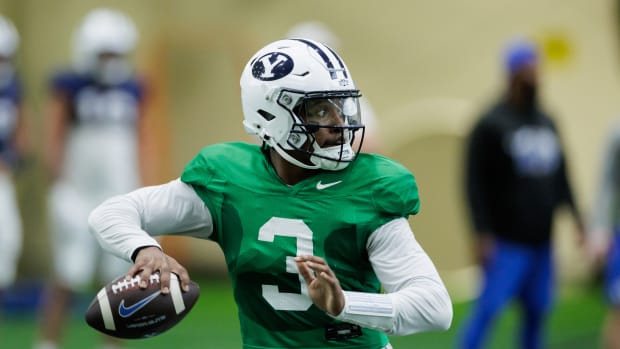How the New-Look Big 12 Fared in the 2022 NFL Draft
Beginning in 2023, the Big 12 will add BYU, UCF, Cincinnati, and Houston in all sports. Then Texas and Oklahoma will leave for the SEC by no later than 2025. Once the Sooners and the Longhorns leave, the new-look Big 12 will have to prove itself without its two biggest brands.
How can the new Big 12 prove itself in a world without Texas and Oklahoma? On-field performance and head-to-head nonconference matchups will matter most. After that, recruiting rankings will also be used as a barometer of success, despite the flaws of the star-ranking system. TV money will be compared once the Big 12 renews its TV deal. Last but not least, the NFL Draft will be a measure of success. In this author's opinion, success in the NFL Draft will be more important than recruiting rankings in the long-term. Therefore, each NFL Draft will be an opportunity for the new Big 12 to see how it stacks up against the other Power Five conferences.
Last week during the 2022 NFL Draft, the new-look Big 12 fared well compared to its Power Five peers.
In this article, we'll look at some data to measure how the new Big 12 performed during last week's NFL Draft. NFL Draft success will be measured in two ways:
- The number of players drafted by conference
- The number of draft points by conference - more on that in a moment
Let's start with NFL draft picks by conference.
2022 NFL Draft Picks by Conference
For the 16th consecutive year, the SEC produced the most draft picks in the country with 65. The SEC was followed by the Big Ten who had 48 players drafted. The current Big 12 and the PAC-12 tied for third with 25 draft picks each. Although the Big 12 averaged more draft picks per school (2.5) than the PAC-12 (2.08). The ACC produced the fewest number of draft picks with 21 - an average of 1.5 draft picks per school.
Using this measure, the Big 12-to-be performed better than the current Big 12. If you include the draft picks produced by BYU, Cincinnati, UCF, and Houston, and you exclude draft picks from Oklahoma and Texas, the new Big 12 produced seven more draft picks than the current Big 12.
2022 NFL Draft picks by school:
- Cincinnati - 9
- Oklahoma - 7
- Houston - 3
- BYU - 1
- UCF - 1
- Texas - 0
Counting the number of draft picks is not a perfect measure. In reality, all draft picks are not created equal. A first-round pick is more valuable than a fifth-round pick, for example. So for the rest of this article, let's look at something I like to call NFL Draft points.
2022 NFL Draft Points by Conference
NFL Draft points weigh the order in which players are selected in the NFL Draft. There are 262 picks in the NFL Draft. Therefore, the first overall pick is worth 262 draft points. The second overall pick is worth 261 draft points. Each subsequent pick is worth one less draft point than the pick before it. So by the time you get to the last pick in the NFL Draft, the final pick is worth 1 draft point.
If you ignored the last paragraph once numbers got involved, here's the punchline: the higher the draft pick the higher the draft points.
By this measure, the current Big 12 ranked fourth out of the five P5 conferences.
When measured by draft points, the PAC-12 had a better draft than the current Big 12. Meaning the 25 draft picks produced by the PAC-12 were selected earlier, on average, than the 25 picks produced by the current Big 12.
The new Big 12 outperformed the current Big 12 in this measure as well. The new Big 12 would have surpassed the PAC-12 for third place.
Time will tell whether the new Big 12 will be able to sustain this level of NFL Draft success in the future. For now, the new Big 12 appears capable of competing with both the PAC-12 and the ACC in the P5 pecking order.








